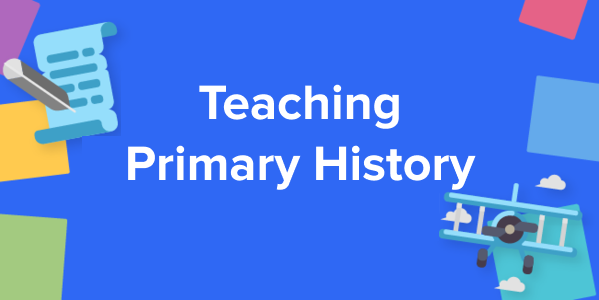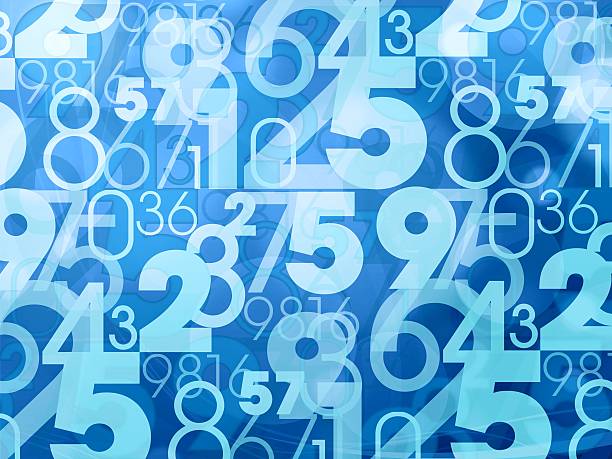How to: Teach the Primary History Curriculum (KS1 & KS2)

Designed to teach empathy, provide perspective, and to learn from the successes and failures of others, the KS1 and KS2 history curriculum is important for a child's learning development. History is a subject that is critical to our society, yet many think they don’t enjoy it due to how they were taught at school.
Be the change that inspires the next generation to fall in love with the past, and that starts with understanding the KS1 and KS2 history curriculum. Get your class excited and engaged to learn with our selection of high-quality resources. Within this guide we’ll run through some of our top tips and activities to make you confident for your next history lesson.
Table of Contents:
- What is the Primary History Curriculum?
- How to Teach the KS1 and KS2 Primary History Curriculum
- Resources to Help Teach History at the Primary Level
If you’re looking for history resources, explore this progressive primary history scheme of work, created by Clive Davies who has an OBE for services to education, for FREE. Designed for teaching history from Years 1 through to Year 6, there is an activity for all.
What is the Primary History Curriculum?
The History National Curriculum, for KS1 and KS2, is designed to give children a broad overview of historical events and time periods. They’ll learn about cultures different from their own and people of significance, so they have a greater understanding of the world around them. It's what makes this scheme of work so exciting to teach.
The Key Requirements For KS1 History
Within the KS1 history curriculum, children should:
- Understand changes that have occurred within living memory
- Learn about significant global and national events across history
- Learn about significant people in history
- Learn about local significant people, places, and events
The Key Requirements For KS2 History
Within the KS2 history curriculum, children should:
- Understand how historical events are complex and act like dominoes in a chain
- Be able to identify and talk about patterns in history
- Discuss change over time
- Understand the reliability and bias of different sources
- Be provided with both an overview of time periods, people, and events, as well as studying some in-depth
- Understand context; how certain events, cultures, religions, and politics changed the way people felt and thought in a specific period
- Understand the relevance of history in today’s world
What Children Will Learn in KS1 & KS2 History
In KS1, you are not required to teach any one particular time period. Instead, you can discuss any relevant events that have happened in living memory or recorded history. Some of the most popular events, people, and places include:
- Victorian Britain
- The Gunpowder Plot
- Kings and Queens
- First World War
- Second World War
- The Battle of Hastings
- Florence Nightingale
- The Great Fire
- The Moon Landing
- The first aeroplane flight
At KS2, you must teach as part of the history curriculum:
- Britain from the Stone Age to the Iron Age
- The Roman Empire and its impact on Britain
- Britain’s settlement by Anglo-Saxons and Scots
- The Viking and Anglo-Saxon struggle for England and the time of Edward the Confessor
- A local history study
- A study of an aspect or theme in British history that extends pupils’ chronological knowledge beyond 1066
- The greatest achievements of the earliest civilizations, including when and where they appeared. You can choose any one of the following:
- The Indus Valley
- Ancient Sumer
- Ancient Egypt
- The Shang Dynasty of Ancient China
- Ancient Greece (their lives, achievements, and impact on the western world)
- A non-European society that contrasts with British history. You can choose one of the following:
- Early Islamic civilization
- A study of Baghdad c. 900 CE
- Mayan civilization c. 900 CE
- Benin (West Africa) c. 900-1300 CE
How to Teach the KS1 and KS2 Primary History Curriculum
- Teach History Contextually
- Take a Macro and Micro View of Events
- Follow the Story
- Bring History to Life
- Ask Questions
If you’re feeling overwhelmed, you’re not alone. The KS1 and KS2 history curriculum is a lot to cover in a short space of time. Remember that your students do not need to know everything about these topics. The goal of the curriculum is to give them a broad overview of history and how it affected people at that time and now. If you are still searching for the right primary history schemes for your class, read our guide to help. Here are some of our best tips on how to tackle the KS1 and KS2 history curriculum.
Teach History Contextually
There’s a lot of information to cover in the KS1 and KS2 history curriculum, and you don’t need to move through each time period chronologically. If another order will work better for you, follow your own lead. Afterall, it’s you who will be doing the lesson planning. However you choose to move through the topics you teach, you need to make sure pupils understand where the events and historical periods take place on the timeline. This is so they know what came before and after the events you’re discussing. By placing the events on a timeline, your pupils can learn how events affect others throughout history.
Take a Macro and Micro View of Events
Whenever you’re discussing a time period or event, make sure you discuss how everyday life was for people living through the period. Whether that’s discussing how life was for children in Victorian times or diving into the way Julius Caesar lived, this close-up look into people’s lives will help pupils better connect with the material. Take things a step further by asking your pupils to discuss how the lives of historical people are different from their own. Relating the KS1 and KS2 history curriculum back to the children’s own lives, can only help them deepen their understanding.
Follow the Story
History is most engaging when there’s a story to follow and that natural desire to find out what happened next is piqued. When choosing which events and topics to cover, choose those that are most engaging by following the drama. For example, pupils always enjoy the Gunpowder Plot, the Great Fire of London, and King Henry VIII.
Bring History to Life
If you are a wonderful storyteller you may be able to keep pupils hanging on your every word in a simple lecture-style lesson. But history is best taught when it’s brought to life for students. Try to:
- take trips out to museums or local landmarks,
- bring antiques or replicas to class for your pupils to handle,
act out scenes, - get them to ask their grandparents or even great-grandparents about what life was like during a certain time or event.
If you’re looking for more tips on how to bring history to life, check out our blog on making primary history lessons more engaging.
Ask Questions
It can be tempting to teach the KS1 and KS2 history curriculum as black-and-white events, but history is multi-faceted. Remember that history is often written by the winners or the most powerful people in society. This bias is something you need to take into account while teaching these subjects. Ask your students questions about how they feel about the events they’re learning about. Ask questions like:
- Do you think this was the right thing to do?
- Do you think this account of [event] is accurate?
- How do you think people felt who were living through this event?
Questions like these give your pupils an opportunity to engage with these topics more deeply and develop their own opinions and understanding of the events they’re learning about.
Resources to Help Teach History at the Primary Level
Since the KS1 and KS2 primary history curriculum is so flexible, lesson planning can be complicated and time-consuming. Following a scheme of work (or unit plans) is the best way to ensure you deliver engaging lessons, without spending hours researching these topics before teaching them.
Focus Education on Pango has created units that cover a wide range of time periods. Focus Education has you covered on everything from the Mayans to Grandparents, so your pupils get a well-rounded overview of history. All units contain knowledge organisers which ensure lessons are aligned with the curriculum and build on what pupils learned the previous year.
The Focus Education history scheme of work was created by Clive Davies, OBE of Services to Education award winner, and all the schemes focus on progression and enquiry, ensuring pupils learn all key historical skills.
To explore the scheme further and try it for free, start a Pango FREE trial today.
Why Use Pango Resources for KS1 and KS2 History Curriculum
Made for teachers, by teachers. We understand that the time you save planning the perfect history lesson can be more valuable used elsewhere. This also goes for planning science lessons, geography lessons and more. With an already busy schedule on your hands, we make finding high-quality resources easier. Whether looking for educational videos, worksheets or checklists to ensure you’ve covered the whole curriculum. Sign up and receive a 7 day free trial now.



